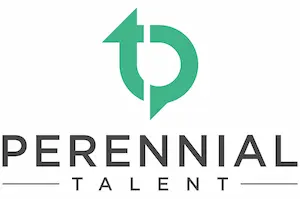8 FAQ About Competencies
Do you have questions about competencies? Like what is it and how is it different than a capability? or What is a competency vs skill? or How many levels should the thing have? or What makes for a good example behaviour? Well, good news! Find out the answers to these questions and more. We answer eight of the most common questions people ask about competencies.
Question #1
What is competency vs skill vs capability?
Answer: It depends on who you ask. Many people use these three terms interchangeably. At Perennial Talent, we view skills as one specific component of both competencies and capabilities. And competencies and capabilities refer to a cluster of related Knowledge, Skills, Abilities, and Other characteristics (KSAO) defined in terms of the observable behaviours needed for successful performance. Some people differentiate between competencies and capabilities, with competencies being the KSAOs someone has right now and capabilities being the KSAOs someone has the capacity to achieve (i.e., I have the capability to become a successful leader, but have not developed the leadership competencies to do so…yet).
Question #2
What’s the difference between a technical competency and a transferable one?
Answer: Technical competencies focus on those behaviours related to the application of technical or functional knowledge related to a specific job or jobs (e.g., incident analysis and response, asset management, prospecting, etc.), while transferable competencies or what are sometimes called “soft skills” focus on those behaviours that apply to a variety of jobs across a variety of industries (e.g., teamwork, adaptability, communication, planning, etc.). Both types of competencies are extremely important. Often, there seems to be a focus on the more technical competencies, but the transferable competencies are just as needed. For example, I am sure you can think of an instance where someone was the go-to person for help on something more technical, like risk management, but they weren’t very adaptable in their approach. You can see how this might become a problem.
Question #3
How many levels should competencies have? One? Two…Ten?
Answer: Competencies seem to come in all shapes and sizes and can have a number of different levels. We have seen one-level competencies and even ten-level competencies! We recommend using competencies with four levels. Using four-level competencies will allow you to describe what successful performance looks like across different levels of experience and learning, from someone still learning the skill or ability to someone with vast expertise in the skill or ability. By using multi-level competencies, you can use the same competency to describe many different jobs across your organization. This allows an employee and their manager to understand what they may need to work on if they wish to not only be successful in their current role but also any other role that they may wish to move into. Also, in our experience having three or fewer levels makes it difficult to capture the range of jobs, and having five or more levels makes it difficult to differentiate successful performance across the many levels.
Question #4
How many behavioural examples should I include per level of proficiency?
Answer: 3 to 4 is ideal. Definitely no more than five. These behavioural examples should focus on the most critical examples of the competency at that level (e.g., developing versus advanced). This way you can reinforce the most important examples of what the competency looks like and reinforce these behaviours but not make the competencies difficult to use (e.g., imagine trying to assess yourself against a list of 10 behavioural examples).
Question #5
How do I write behavioural examples or indicators? Any tips on how to do it?
Answer: Good behavioural examples should begin with one, and only one verb. This way you are only measuring one behaviour as opposed to two. Behavioural examples must be observable – that is, you should be able to see someone doing it. Finally, do not include unnecessary adverbs (e.g., effectively, successfully) because the behavioural example already describes what appropriate or effective behaviour looks like.
Question #6
What about a competency framework, what’s that?
Answer: Competency frameworks are the overarching set of rules that ensure competency profiles and the grouping of profiles are developed and applied consistently across the organization. Rules include what types of competencies (e.g., core, job-specific, leadership) will be included in profiles as well as the number of each type of competency. Rules also include how profiles will be grouped together into job families/groups/areas.
Question #7
What is a competency profile?
Answer: Competency profiles provide a structured method for grouping the most critical competencies for a role. Competency profiles are essentially the collection of competencies (including their associated behaviours) needed to be successful in a given role.
Question #8
How many competencies should a competency profile have?
Answer: 6-8 is ideal. Definitely no more than 10. It’s difficult to identify every single requirement for a job, so you should focus on the most critical behaviours needed for successful performance or those make or break behaviours. Again, it is about identifying the “must-haves” as opposed to the “nice to have.” We recommend using no more than 6-8 competencies to describe a job. This way, there are enough competencies to describe the job accurately, but not too many to make HR applications impractical (imagine hiring based on 15 key competencies or having your managers’ rate employees on 15 things!).


